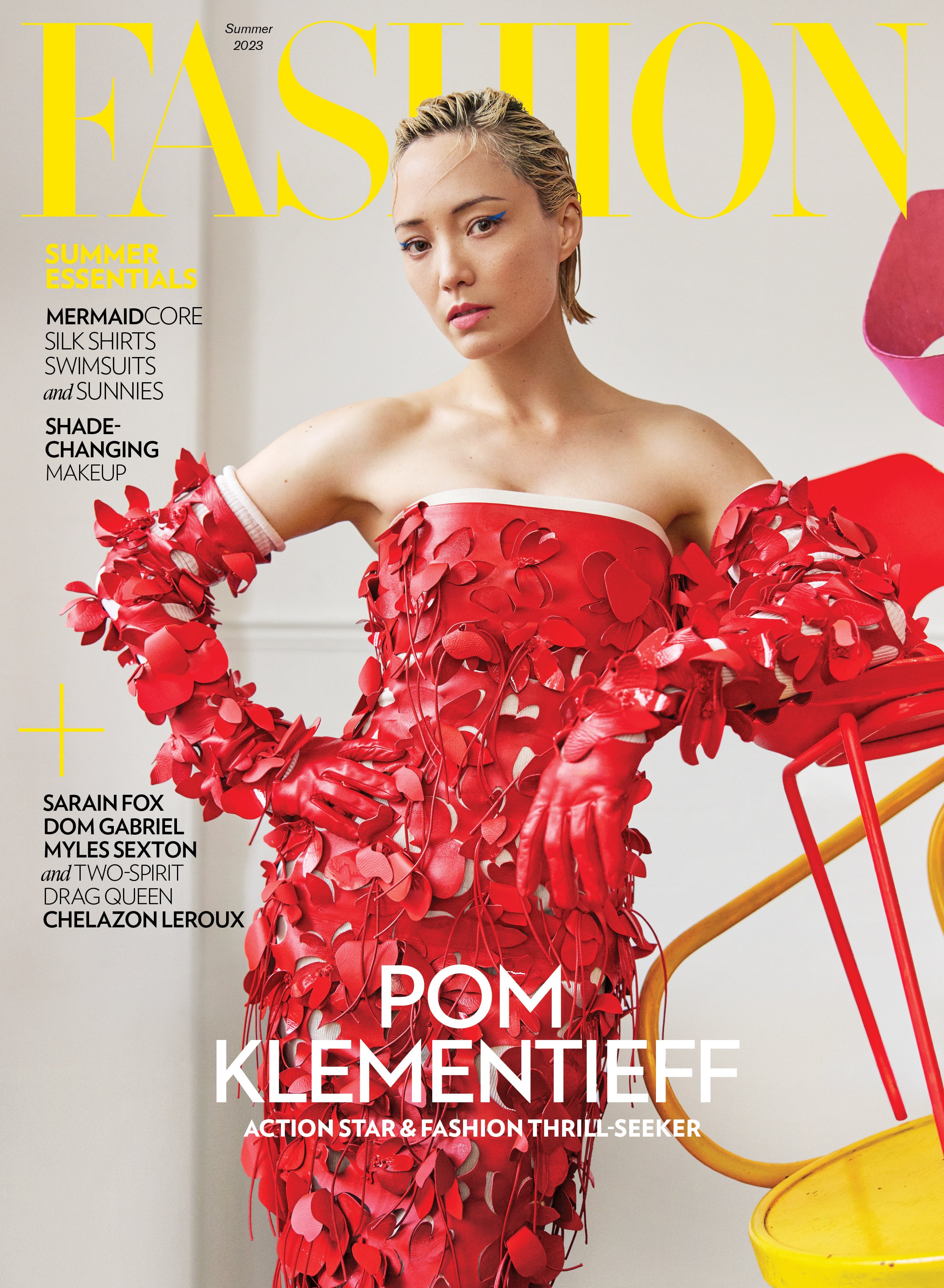Lesley Hampton’s Collection Honouring Indigenous Women & Other Highlights From Day Two of Toronto Fashion Week
Our recap of day two of Toronto Fashion Week A/W '19
Lesley Hampton’s show at the Gardiner Museum opened with a powerful performance by Indigenous singer and musician Iskwe. Wearing a spectacular feathered capelet, the Juno-nominated artist performed two original tracks with a live band, ending with a call to the entire room to join in on a song titled ‘The Unforgotten,’ which she says is about “trying to heal all people; it doesn’t matter where you come from.”
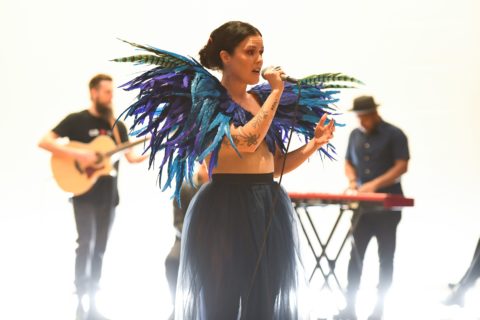
“We are the nation of tomorrow, we are the children who are not afraid to die,” she sang, lyrics that resonated all the more strongly after viewing Lesley Hampton’s collection, entitled Eighteen Seventy Six in reference to the date that the Indian Act was enacted by the Canadian government, giving legal recognition to Indigenous persons. A cast of Indigenous models walked down the runway in pleated pleather and floral embroidered dresses designed by Hampton, who belongs to the Temagami First Nation of Bear Island, Ont. and has ties to the Mohawk Nation at Akwesasne. Colour was an important signifier in the collection, the use of navy blue referring to the impact of residential schools on their community, while red detailing served as a reminder of the number of missing and murdered Indigenous women in Canada.

Earlier in the evening, menswear designer Thomas Balint chose an interesting format for his showcase of high-waisted trousers, plaid duster coats and wool shirts in shades of khaki, grey and black. In lieu of a runway show, he arranged a group of models in a tableau setting, while Nadiya Svirsky, a Ukraine-born, Toronto-raised visual artist, live-sketched each of the model’s faces (bonus points to the designer for selecting a diverse bunch).
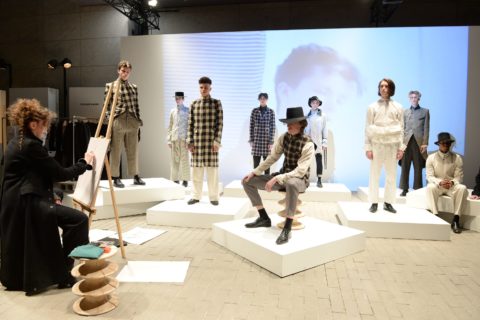
Croatian-born designer Zoran Dobric often utilizes an array of artisanal techniques in his work, such as block-printing, shibori pleating, batik, and hand-painting. For his latest collection, he collaborated with Japan’s Aoyama Kohaze, sewing their ‘kohaze’—clasps for fastening of ‘tabi’ (Japanese socks), ‘kyahan’ (Japanese leggings) and ‘tekkou’ (Japanese hand- and wrist-covers)—on to luxurious silks. The collection also features embroidery using vintage hair samples, laser mirror foil cutting and digital printing.

Next up was a dual showcase by Pedram Karimi + Process Visual. Pedram Karimi, the Montreal-based designer who launched his gender-neutral brand in 2013, explained the inspiration behind the show in a pre-taped video, saying its purpose “is to inspire youth, especially the ones that are not exposed to art, design and spirituality.”
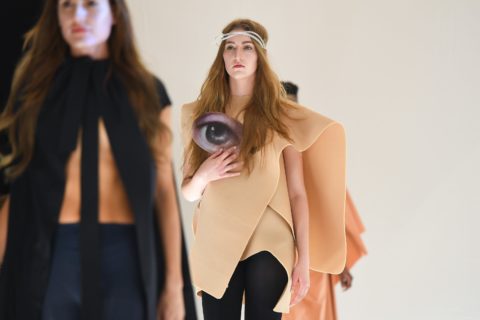
His collection featured asymmetrical silhouettes and diaphanous fabrics, with models walking down the runway clutching cut-outs of anatomical hearts and eyes to their chests, while Process Visual showcased a line of fluid separates in moody hues of oxblood, emerald green and black.
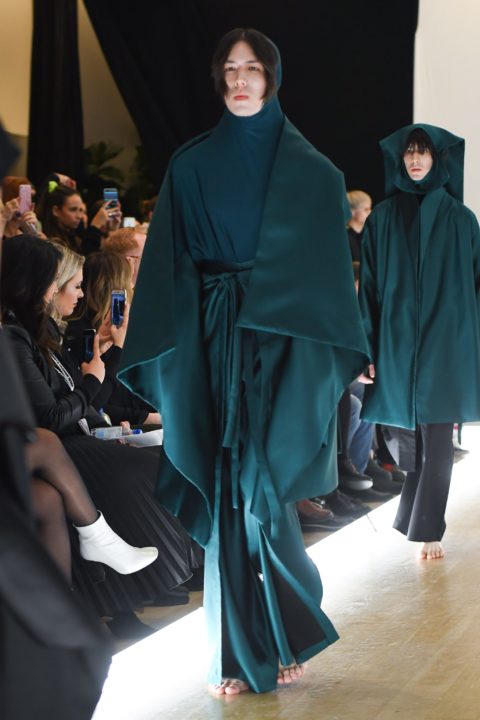
Rock ‘n Karma closed day two of TFW with a spirited and energizing showcase of their latest line. Classic rock ‘n’ roll elements made an appearance, with a mainly black-and-silver colour palette dominating the collection. The audience seemed to respond most strongly to the pieces emblazoned with slogans like ‘I’ll Never Stop Wearing Black’ and ‘Fashion Is My Drug’ but it was model Judith Maria Bradley who undoubtedly stole the show. Her gray hair in an updo, she danced down the runway wearing oversized sunglasses and a slinky green dress, and soon had the entire room cheering their support.
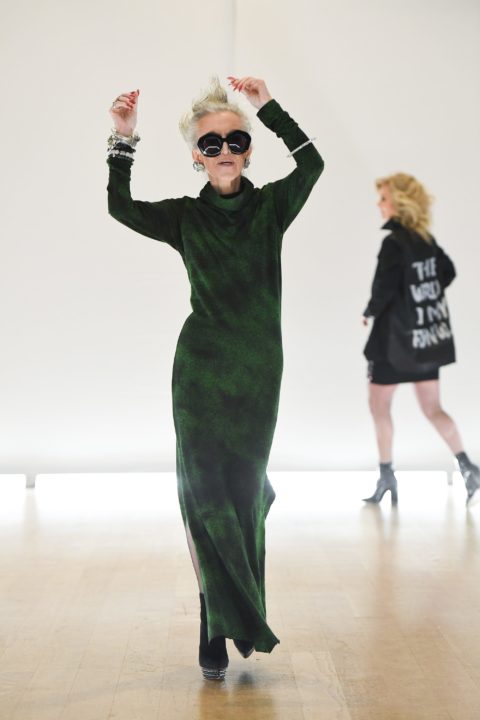
ICYMI, here’s our recap of Day One.





